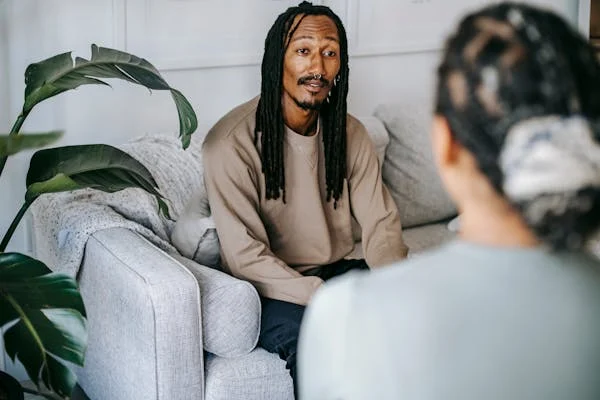Anxiety disorders encompass a range of conditions characterized by excessive worry, fear, or nervousness, which can interfere with daily life. While normal anxiety can be a helpful response to stress, anxiety disorders involve persistent, overwhelming symptoms that go beyond typical worry. Here are more in-depth details on various aspects of anxiety, including its types, symptoms, treatment, and self-help strategies.
Types of Anxiety Disorders (In-Depth):
- Phobias:
- Definition: Intense, irrational fear of specific objects or situations that present little or no actual danger.
- Symptoms: Immediate panic or anxiety response when exposed to the object of fear, leading to physical symptoms like trembling, shortness of breath, or heart palpitations.
- Examples: Fear of heights (acrophobia), enclosed spaces (claustrophobia), or animals (e.g., spiders, dogs).
- Impact: Phobias often lead people to avoid certain situations or places to prevent encountering their fear, disrupting daily routines or social interactions.
- Generalized Anxiety Disorder (GAD):
- Definition: Persistent, excessive worry about various aspects of daily life, including work, health, finances, or relationships.
- Symptoms: Constant, uncontrollable worry, restlessness, difficulty concentrating, fatigue, irritability, muscle tension, and sleep disturbances.
- Duration: GAD symptoms occur on most days for at least six months, making it difficult to control the worry.
- Impact: The overwhelming worry can affect a person’s ability to function at work, maintain relationships, or enjoy everyday activities.
- Social Anxiety Disorder (SAD):
- Definition: Intense fear of social situations where one might be judged or scrutinized by others.
- Symptoms: Fear of embarrassment, blushing, sweating, trembling, nausea, difficulty speaking, or even experiencing panic attacks in social settings.
- Triggers: Commonly triggered by situations like public speaking, meeting new people, or even eating in public.
- Impact: Many people with SAD avoid social gatherings, school, work events, or other situations that involve interaction, leading to isolation or impaired relationships.
- Post-Traumatic Stress Disorder (PTSD):
- Definition: A condition triggered by experiencing or witnessing a traumatic event, such as assault, accidents, combat, or natural disasters.
- Symptoms: Re-experiencing the trauma through flashbacks or nightmares, emotional numbness, hypervigilance, irritability, and avoidance of places or situations related to the trauma.
- Duration: PTSD is diagnosed when symptoms last longer than one month after the traumatic event.
- Impact: The disorder can significantly disrupt a person’s life, causing difficulty in relationships, work, and daily functioning.
- Panic Disorder:
- Definition: Recurrent, unexpected panic attacks—intense episodes of fear or discomfort that peak within minutes.
- Symptoms: Chest pain, rapid heartbeat, shortness of breath, dizziness, fear of losing control, or feeling like you’re having a heart attack.
- Impact: People with panic disorder often fear future attacks, leading them to avoid certain situations or places where they believe an attack might occur.
- Obsessive-Compulsive Disorder (OCD):
- Definition: A condition characterized by persistent, unwanted thoughts (obsessions) and repetitive behaviors (compulsions) performed to relieve anxiety.
- Symptoms: Common obsessions include fears of contamination, harm, or making mistakes. Common compulsions include excessive handwashing, checking, counting, or arranging objects.
- Impact: OCD can be time-consuming and exhausting, often interfering with daily activities, work, or social relationships.
Common Symptoms of Anxiety Disorders:
- Physical symptoms: These include restlessness, muscle tension, fatigue, racing heart, sweating, nausea, dizziness, shaking, and difficulty breathing.
- Emotional symptoms: These include constant worry, feelings of dread or panic, irritability, and difficulty concentrating.
- Behavioral symptoms: Avoidance of situations or activities that trigger anxiety, such as social gatherings, driving, or public speaking.
- Cognitive symptoms: Difficulty focusing, intrusive thoughts, excessive worry about worst-case scenarios, or feeling “on edge.”
Psychological Therapy for Anxiety:
- Cognitive Behavioral Therapy (CBT):
- How it works: CBT helps people identify and challenge negative thought patterns that contribute to anxiety. It encourages the development of more realistic, balanced thoughts.
- Components:
- Cognitive restructuring: Learning to replace catastrophic or distorted thinking with more balanced perspectives.
- Behavioral activation: Engaging in activities that counteract avoidance behaviors and reduce anxiety over time.
- Exposure Therapy:
- How it works: Gradually exposing a person to their fears in a safe, controlled manner to help reduce the emotional response. The more a person faces their fear without negative consequences, the less anxiety they’ll experience.
- Examples: A person afraid of flying may start by looking at pictures of airplanes, then visiting an airport, and finally taking short flights.
- Insight-Oriented Psychotherapy:
- How it works: Explores underlying emotional conflicts, traumas, or past experiences that may be contributing to present-day anxiety.
- Goal: Helps individuals understand their emotional triggers and resolve unconscious conflicts that contribute to anxiety.
Medications for Anxiety:
- Selective Serotonin Reuptake Inhibitors (SSRIs): Often the first-line treatment for anxiety. These medications help increase serotonin levels in the brain, which can improve mood and reduce anxiety.
- Examples: Fluoxetine (Prozac), Citalopram (Celexa), Escitalopram (Lexapro).
- Serotonin-Norepinephrine Reuptake Inhibitors (SNRIs): These medications work similarly to SSRIs by affecting both serotonin and norepinephrine, another brain chemical involved in mood regulation.
- Examples: Venlafaxine (Effexor), Duloxetine (Cymbalta).
- Benzodiazepines: Fast-acting medications used for short-term relief of severe anxiety. These drugs are typically used in acute situations because they can cause dependence.
- Examples: Clonazepam (Klonopin), Lorazepam (Ativan).
- Buspirone (Buspar): A non-benzodiazepine medication that helps relieve anxiety without causing sedation. It is often used for generalized anxiety disorder.
- Beta Blockers: These medications help control physical symptoms of anxiety, such as rapid heartbeat and trembling, by slowing the heart rate.
- Example: Propranolol (Inderal).
Self-Help Strategies for Anxiety:
- Exercise:
- Benefits: Regular physical activity helps reduce stress, improve mood, and regulate sleep, all of which can help alleviate anxiety. It also promotes the release of endorphins, chemicals in the brain that enhance feelings of well-being.
- Recommendations: Aim for at least 30 minutes of moderate exercise most days of the week, such as walking, jogging, or swimming.
- Mindfulness and Meditation:
- How it works: Mindfulness helps you focus on the present moment rather than worrying about the future or dwelling on the past. Meditation teaches you to manage your thoughts and reactions to anxiety.
- Benefits: Research has shown that mindfulness meditation can lower anxiety, improve emotional regulation, and increase relaxation.
- Relaxation Techniques:
- Deep breathing: Involves slow, deep breaths to reduce tension and stimulate the parasympathetic nervous system, which calms the body.
- Progressive muscle relaxation: Tensing and then relaxing different muscle groups to release physical tension.
- Visualization: Imagining a peaceful, calming scene to distract the mind from anxiety-inducing thoughts.
Conclusion:
While anxiety disorders can feel overwhelming, they are manageable with the right approach. Psychological therapy, medications, lifestyle changes, and self-help techniques can significantly reduce anxiety symptoms and improve quality of life. It’s important for those struggling with anxiety to seek help from mental health professionals and develop a personalized treatment plan that works best for them.








